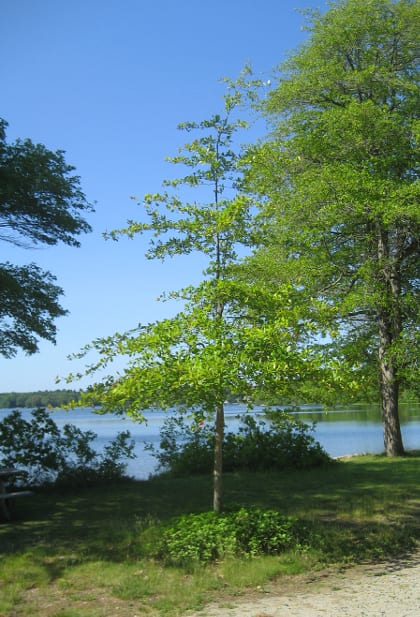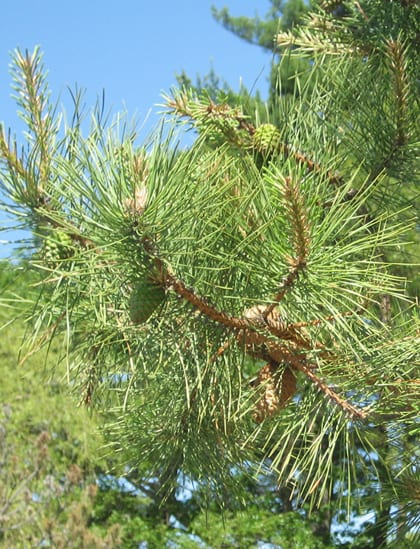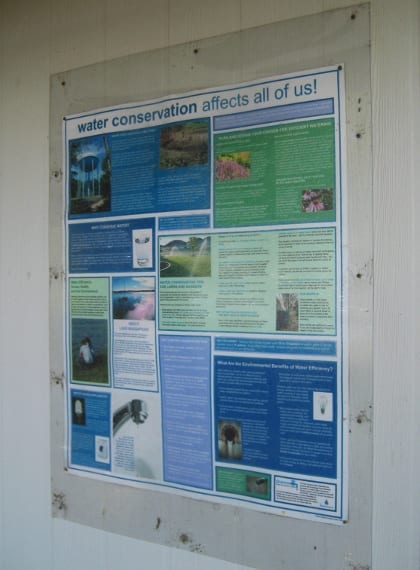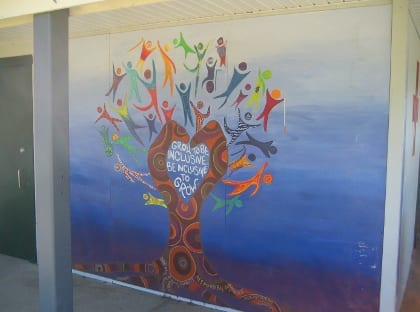In 2002 landscape architect Amanda Sloan began a five-year project working with the town of Sharon, MA to restore the worn landscape at Memorial Park Beach, Lake Massapoag. The project was covered in a 2010 article in the ELA Newsletter. This spring ELA invited Amanda to revisit the project and report on how the restoration has been progressing. Following is her photo essay on the landscape, which fends for itself and is never irrigated or fertilized. ELA is offering a tour of the project with Amanda on Saturday, September 26, 2015.
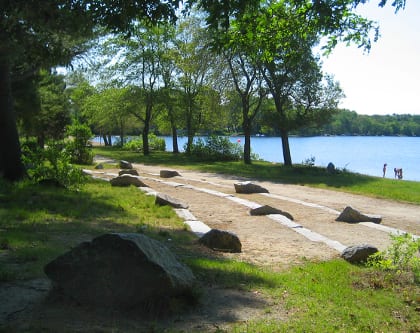
Lake Massapoag, 2015: An early summer day at a New England lake. Almost every New England town has a local recreational lake or pond. A goal of this project was to maintain the recreational value of the lakeside park, which is used enthusiastically by the community spring through fall for swimming, walking, biking, relaxing, and weekly outdoor concerts, while restoring natural, ecologically supportive elements such as tree groves, native buffer plantings, and native materials such as granite boulders.
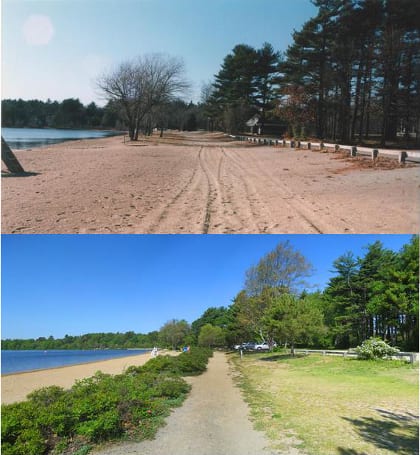
During 50 years until the 1990s, a long stretch of the lake shore had been cleared of vegetation and spread with beach sand. These “before” and “after” photos, both of this same stretch, show how the introduction of shade trees and buffer plantings can be very successful in just 12 years. The plantings add habitat and water-cleansing value, create a multi-use path along the shore, and do not detract from the pleasure of visitors who want a piece of sand to stretch out on or dig in!
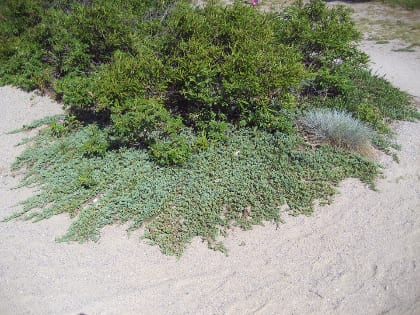
Plants in the buffer beds were chosen for their affinity to a dry, sandy environment. Among the successes is rug juniper (Juniperus horizontalis), a native that is busily sending blue arms across the sand. Also happy in this buffer bed are native sweetfern (Comptonia peregrina) and festuca “Elijah Blue,” (not a native).
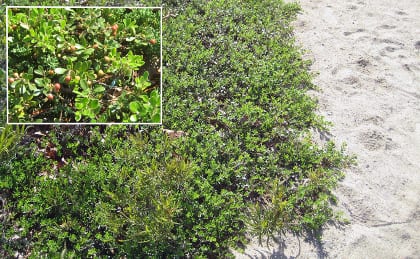
Bearberry (Arctostaphylos uva ursi), which is seldom successful in the rich soils of cultivated plant beds, has set up home with abandon after its 2003 planting on the sandy shores of the lake.

Shore juniper (juniperus conferta) forms spreading pools of green around the set boulders of a seating/retaining wall.
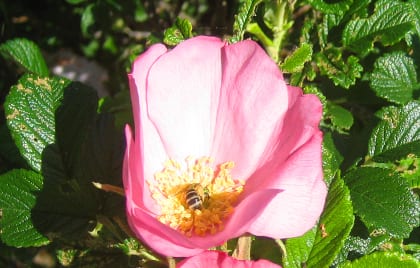
At the time the original plants were chosen, our native roses (Rosa virginiana, palustris) were not locally available. Beach rose (Rosa rugosa “Frau Dagmar Hastrup”) was planted instead and has been well behaved, in addition to supporting native pollinators such as this Metallic Green Bee (yes, that’s its real name!) If we were doing the project today, I would have planted the native roses instead as they are now widely available.
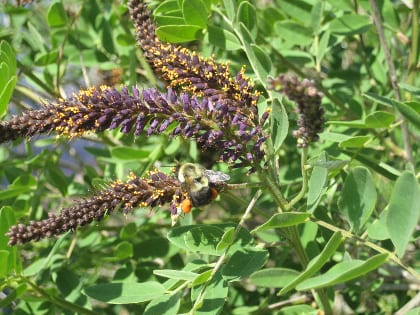
Desert False Indigo (Amorpha Fruticosa) was present at the lake before the project began. It is a native of North America that prefers sandy and moist shore environments. It has been noted to spread enthusiastically and does appear on invasive plant lists; at Lake Massapoag we left it alone. It is heavily visited by bumblebees such as this one with full pollen sacs.

While the main goal was ecological restoration, the project also opened up the lakeshore to a wider variety of human uses. The multi-use path is popular throughout the year for walkers, joggers, and cyclists. Being able to get close to the lake and enjoy it helps community members keep health among their priorities.
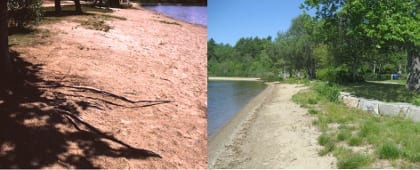
Where formerly the shore was eroding and tree roots being exposed (left), I set a natural strand of local stone boulders as a retaining structure. This section now supports a wide variety of lakeshore vegetation including many sedges that have naturally seeded in. Along the top of the boulders, clusters of fragrant Sumac (Rhus aromatica) and Morella Bayberry (Myrica pensylvanica) were planted and have done very well. Note that swimmers still have good access to the water.
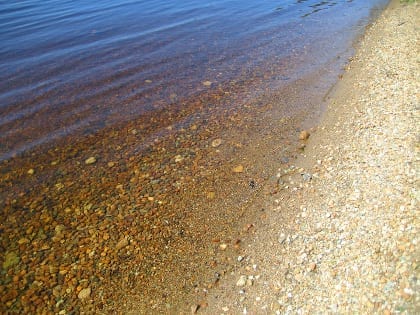
The clear, tea-colored waters of a typical healthy New England lake: colored by tannin from oaks and bog iron in the substrate.
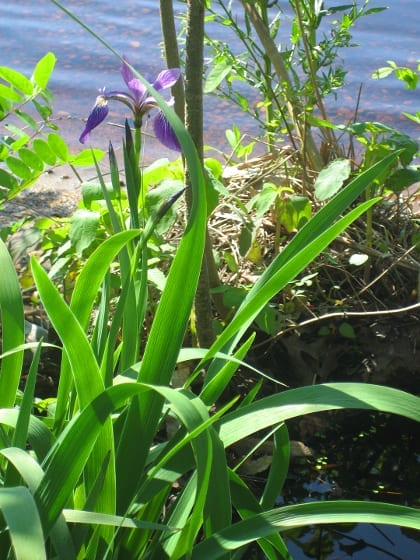
Where a culvert brings waters from nearby wetland to the lake, Blueflag Iris (Iris versicolor) has been the most successful planting.
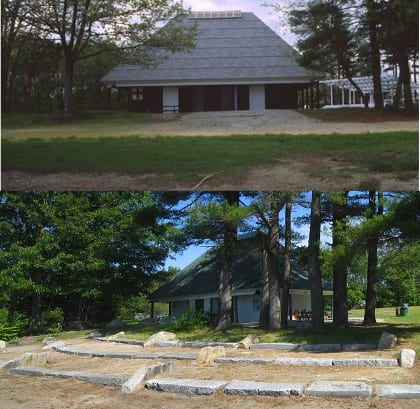
Besides planting seeds of ecological restoration, the project’s effect has been to invite the town to enhance and beautify recreational and educational amenities and offerings at the park. Here, views of the bath house in 2002 (left) and today.

The project specifically addressed accessibility along the beach and to the water. A roll-out boardwalk from Mr. Boardwalk Company, installed in 2003, still functions well.
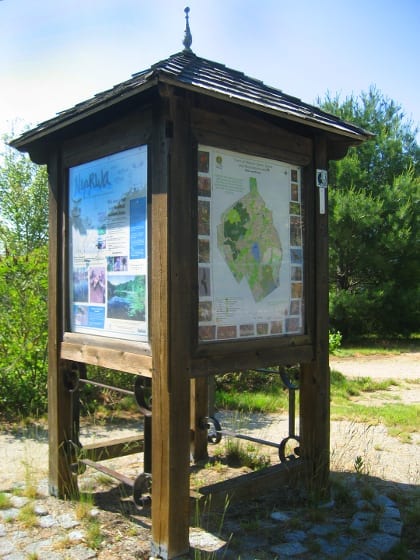
Information kiosks at both ends of the lakeside path provide information about wildlife, the lake watershed, and town history.
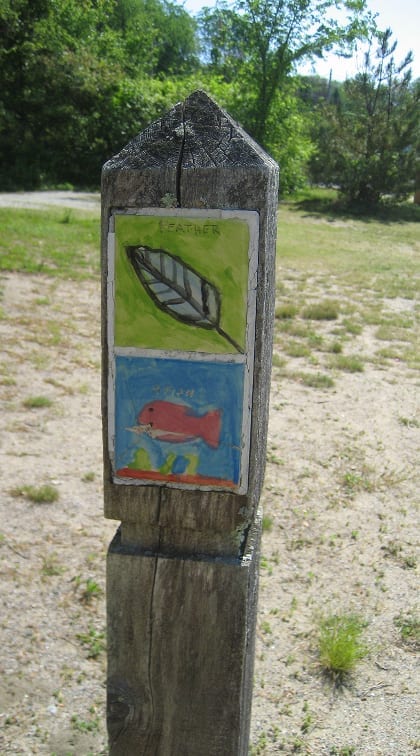
An environmental art project, created by Sharon elementary students twelve years ago and set along the multi-use path, shows a “pictorial walking timeline” of lake history. Plans are underway to have the newest crop of Sharon’s young students restore and recreate the timeline this year as part of the town’s 250th Anniversary celebration.
About the Author
Amanda Sloan, RLA, ASLA, has worked for over 22 years to bring beauty as well as function to the design of parks and trails throughout New England. Amanda combines her background in natural science, community design, and art on projects such as school and playground gardens, lakeside parks, recreation sites, rain gardens, and home landscapes. Amanda is currently a landscape architect with BETA Group where she specializes in rain garden design and native plants.

